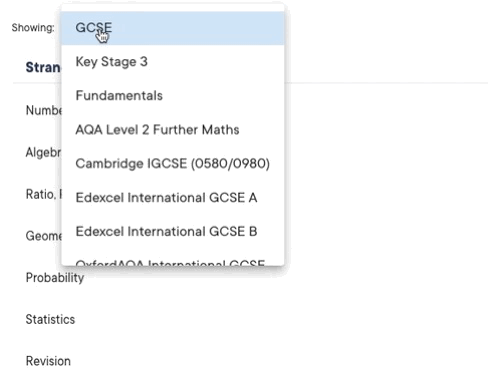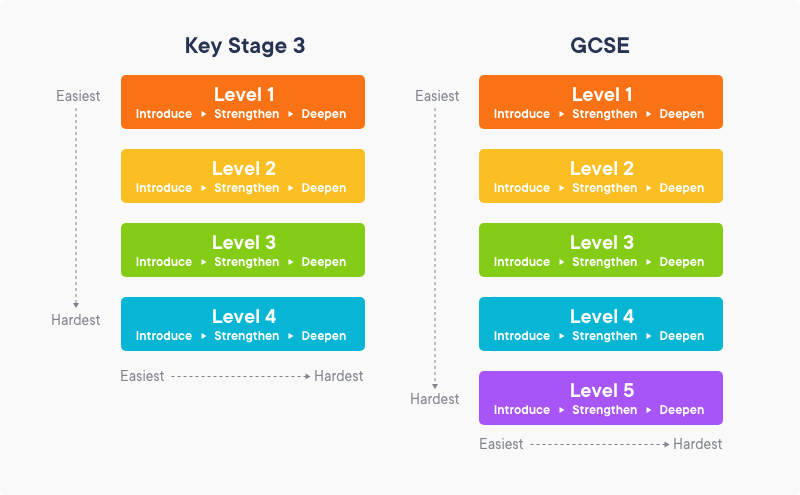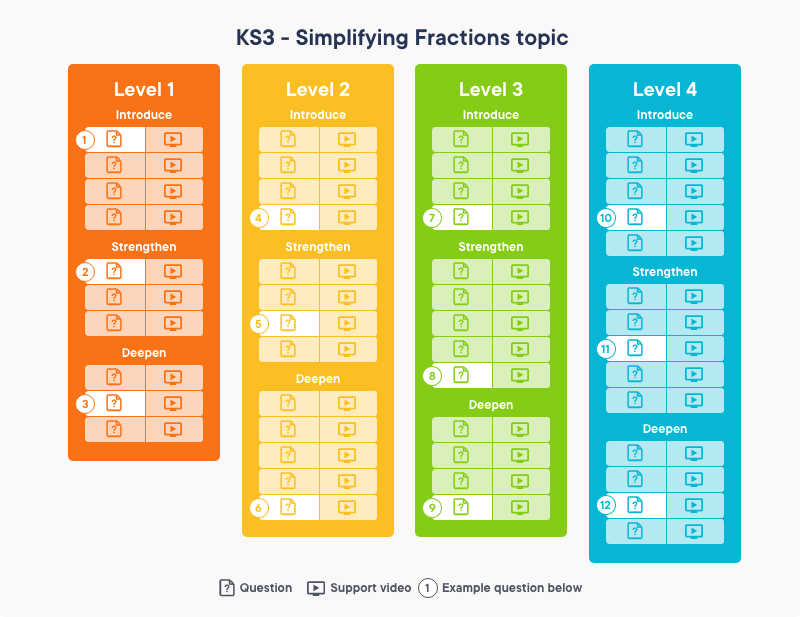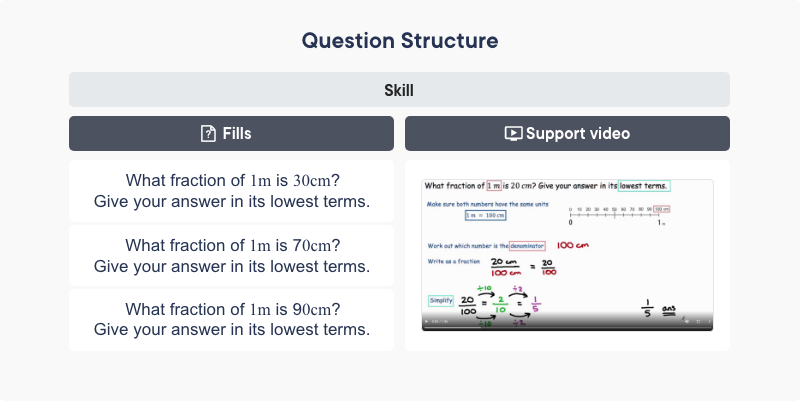
Sparx Maths Content
A deep dive into how we structure content at Sparx Maths.
Over the last 10 years, the Sparx Maths (Sparx) content design team have been creating and refining a quality bank of nearly 50,000 questions. Contributions from a team of teachers, mathematicians, content designers, data analysts and linguists have led to a comprehensive and sophisticated content library for secondary maths.
The data we have collected from over 650 million question attempts helps us to continually refine our product; at Sparx, we understand and respect that high quality content is a crucial ingredient and that this process cannot and should not be rushed. Teachers are at the heart of this process; the attention to detail on every single question helps all teachers to understand and support their students in every aspect of mathematics.
Joining with HegartyMaths was super exciting, and we learnt huge amounts from the content. But with the experience of the fantastic Sparx content team combined with intelligent data, we were able to supercharge the Hegarty content, resulting in a product that we are really proud of.
In this blog, we will outline the structure of the Sparx content, and give you an insight into some of our fantastic topics and questions. In particular, we will zoom in and out of a very well known KS3 topic: simplifying fractions. This will be the first in a series of blogs that will exemplify why we believe that Sparx Maths can help every learner to become a more successful mathematician, and to help all teachers be the best teachers they can be.
The big picture:
Sparx content is organised as follows:

For example our simplifying fractions topic can be found in KS3 > Number > Fractions and mixed numbers.

Topic structure:
No question is written in isolation; every Sparx question forms part of a carefully sequenced task designed to guide learners step-by-step through a topic. The content has comprehensive and detailed coverage to promote flow and provide scaffolding where needed. This scaffolding enables all learners to experience success, gain motivation and allow them to reach the point where they are suitably challenged.
The ideal sequence of questions isn’t the same for all students. For example, some students may need additional scaffolding and a more gradual introduction in order to access a concept, while other students may be able to progress at a faster pace through the material.
Equally, ‘problem solving’ shouldn’t be reserved for certain groups of students. Instead, all students should receive the support, variation and challenge suitable for their current working ability.
So, with this in mind, each Sparx topic has a number of different attainment levels and within each we have introduce, strengthen and deepen material to ensure all students are catered for.
A summary of how this is structured for KS3 and KS4 is shown below:

Let’s have a look at how KS3 simplifying fractions is structured under this content. In Sparx, there are 37 questions spread across four levels of difficulty, addressing both fluency and problem solving. The extra level of atomisation seen in Sparx really does give all learners the opportunity to succeed and to be challenged in their given level.

Question structure:
Sparx questions contain around 3 ‘fills’, which are questions designed to cover the same learning point and be the same difficulty. This allows questions to be reattempted or revisited by students without redoing exactly the same question. It also has the added benefit of reducing the likelihood that students see the same question as their peers and share/copy answers!
Every question is accompanied by a tutorial video working through an example tailored to the question (essentially another ‘fill’). These are designed to be short and targeted videos so students can focus on the key elements of the question they may be struggling with.

In a future blog we’ll cover in more detail how we painstakingly consider question and tutorial video design in order to combat misconceptions. Students should never be able to get a question correct following a misconception or incorrect method, ensuring mistakes are immediately highlighted to the student and teacher.

